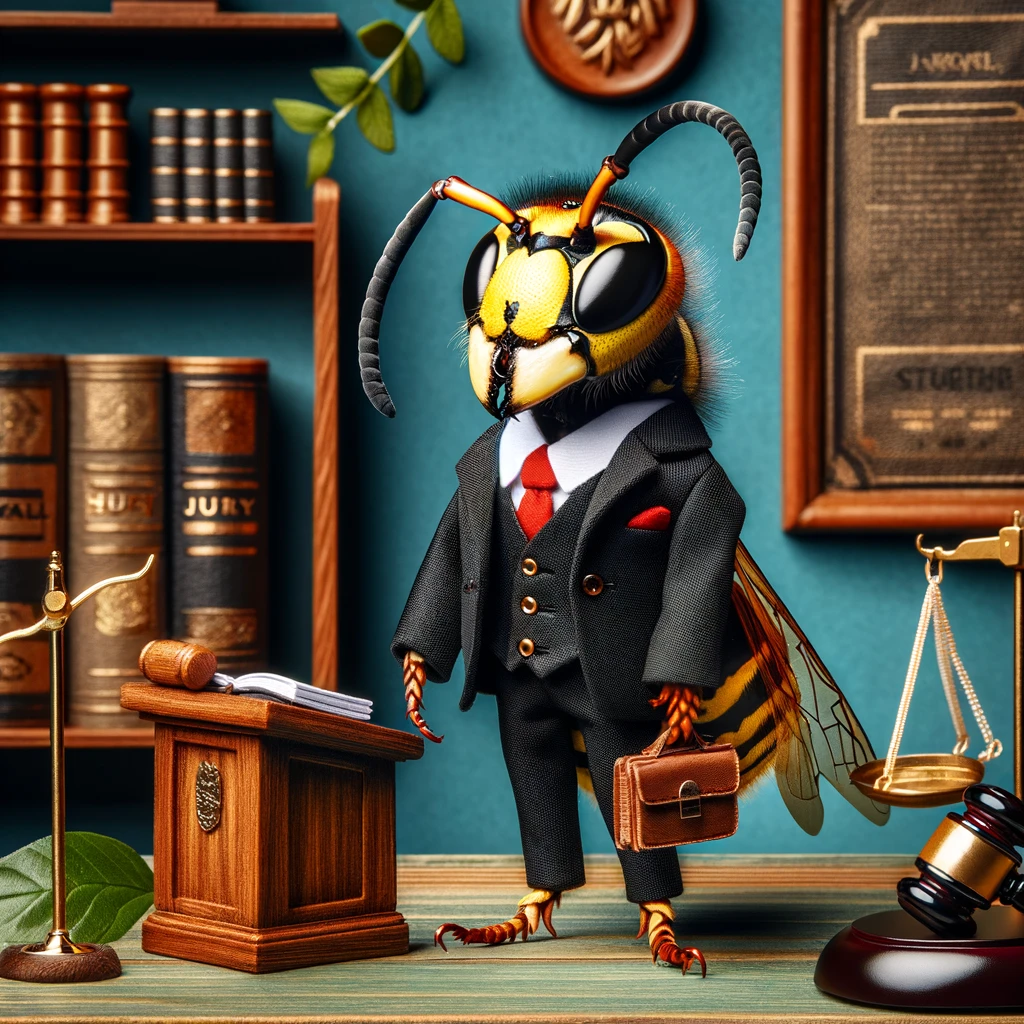In the quiet buzz of the countryside, a war is waged not just on the fields but in the legal text, aiming to protect our most industrious workers: the bees. As general awareness around the importance of bee populations to agriculture and natural ecosystems grows, so does the understanding of the threats they face. One such threat comes from hornets, including the invasive Asian giant hornet, known for its devastating impact on bee colonies.

We draw upon various sources to shed light on the current legal measures, challenges, and proposed changes aimed at protecting our beehives and, by extension, our crops.
The Legal Framework
In the UK, specific diseases and pests threatening bees, such as the American foulbrood and European foulbrood, are classified as notifiable. This means beekeepers must immediately report any suspicions of these diseases to the National Bee Unit (NBU). The regulations are clear: once a threat is reported, measures such as hive closure and equipment disinfection become mandatory to prevent the spread.
Facing the Hornet Threat
The presence of Asian giant hornets in various regions has prompted a mix of fear and action within the beekeeping community. Beekeepers are advised to alert agricultural officials upon spotting these hornets, signifying the importance of governmental involvement in tackling the issue. Practical advice includes using bait traps and specialized hornet traps around beehives as a defense mechanism. These methods highlight a proactive approach to hornet deterrence but also hint at the need for legal support and guidance for beekeepers.
Innovation at the Hive Entrance
An interesting development in the UK involves the use of ‘muzzles’ at hive entrances to protect bees from Asian hornets. This ingenious solution allows bees to come and go freely while keeping the hornets at bay. It represents a grassroots level of innovation within the beekeeping community and suggests a potential area for further legal support and research funding.
The Pesticide Problem
Pesticides pose another significant threat to bee populations, often leading to rapid colony declines. The symptoms of a pesticide-related bee kill are unmistakable and tragic, underscoring the need for stringent regulations that carefully balance pest control with the preservation of vital bee populations. The existing guidelines for pesticide use around bees are a step in the right direction, but continuous monitoring and adjustment may be required to address the evolving challenges.
Toward a Brighter Future
The fight to protect our bees from hornets and other threats is multifaceted, requiring a balanced legal approach that encompasses regulations, awareness campaigns, and the development of innovative protective technologies. As the general public becomes more aware of these issues, there is a growing call for enhanced legal frameworks that facilitate rapid response to threats, support beekeepers, and ensure the sustainable health of bee populations.
The protection of bees is not just a matter of environmental concern but a crucial step in safeguarding our food supply and maintaining biodiversity. As such, it represents an area where legal, agricultural, and environmental interests converge, offering a unique opportunity for collaborative progress.
Source: Purdue University